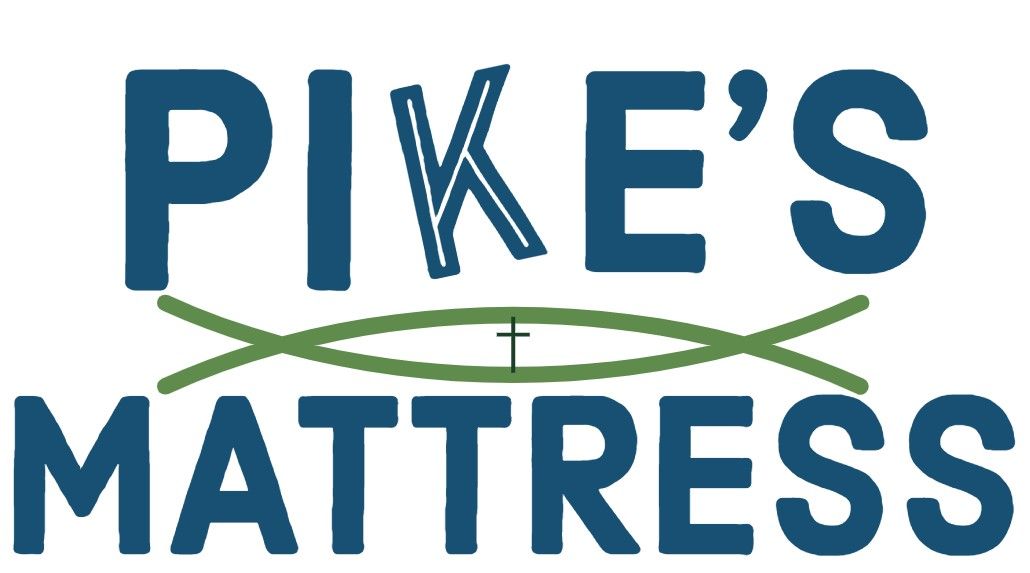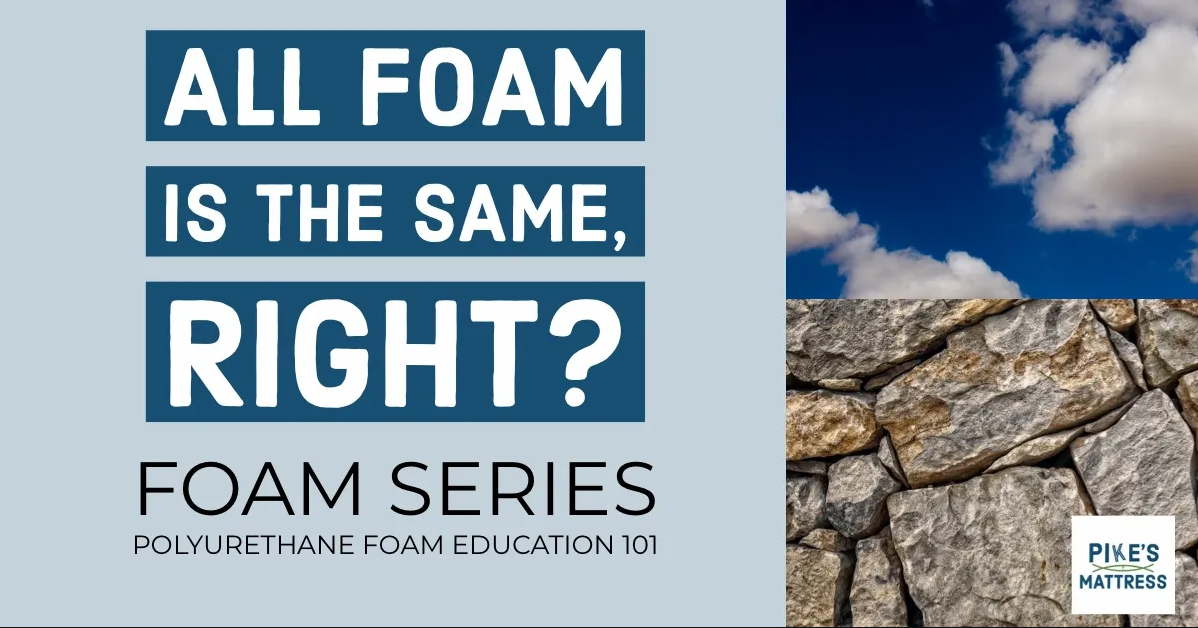All foam is the same, right?
Foam Series
Polyurethane Foam Education 101
WRONG! Not all foam is the same. In fact, not all memory foam is the same, and not all latex foam is the same. This is why some memory foam mattresses cost $200 while others cost over $2,000. Now granted, sometimes it is just a greedy salesman, but normally the difference is in the quality. If you really want to know how to shop for a mattress (or any foam product for that matter) then keep reading.
First of all, I want to address a common misunderstanding. Not all foam is memory foam. Not all foam is latex rubber. But all real mattresses have some foam in them. I’m not including those cheap air beds that you blow up for guests when you want them to leave sooner rather than later, nor am I talking about very dated waterbeds (which, by the way, if you still have one, it’s time to replace it.) Both of those items I would never sell. Honestly, I wouldn’t take one of the premium air beds either. I wouldn’t take one of those if you gave it to me for free. They all leak. But let’s get back to the topic at hand — foam.
This is going to get a little geeky but try to follow along. If you really want to know what you are buying, then you should know some basics. If you get bored, you can skip down to the section marked "Less Techy," but it won’t make as much sense.
Before I can explain the difference between foams, I need to explain how foam is made. Polyurethane foam starts out as a few main chemical components in their liquid form. One of those main chemicals is called Toluene Diisocyanate (TDI). Without TDI you wouldn’t have foam for your mattress, chairs, couches, carpet padding, the seat in your car, or even your backpack straps. Polyurethane foam is everywhere. One interesting fact about TDI is that it freezes at 57°F (14°C). So it must be kept hot until it is ready to be used. Without getting too technical, the TDI is mixed with Polyols to form a liquid. There are usually a few other additives to make each specific foam type. Basically, they mix the ingredients much like you do a cake, and just like a cake, the basic ingredients are the same, flour, sugar, eggs, etc. But you can add chocolate and make it chocolate cake. Or carrot and make it a carrot cake. In the same way, you can add other additives to the recipe and have a totally different type of foam. So, much like baking, there are endless possibilities when it comes to foam types.
What’s really cool is that when they pour the liquid it is like pouring it into a giant baking pan. In fact, the entire mixture heats up because of a chemical reaction between the ingredients. When they heat up, it rises. It looks like a giant loaf of bread or cake. They actually call it a "bun" of foam. Then, just like cake or bread, they slice it down to the sizes needed. Now, some people will say that it is much more complicated than that and they are right. But I just wanted to explain the basic concept.
So now that you understand how foam is made you need to know how it is graded. There are two sets of numbers to know when grading foam. There is the density and the Indentation Force Deflection (IFD). The IFD is also sometimes referred to as the Indentation Load Deflection.
I will try to give you the fast version. The density is the weight of the product — or better yet, it is the quality. For example, a 1.0lb piece of foam is what I call an "el-cheapo" piece of foam. You won’t find anything like that at Pike's. In the bedding industry, we see densities from 1.0lbs all the way to 2.3lb densities. There are much higher densities but they are too dense for bedding, and the higher the density, the more expensive the foam. In fact, most mattress manufacturers today don’t even carry a 2.3lb foam because it is too expensive to make a huge profit off of. However, at Pike’s Mattress, we believe that you deserve quality. So we are proud to offer our HR line of foam mattresses in a 2.3lb density foam.
The next thing to explain is the IFD or the ILD. Basically, they take a 50 square inch plate and compress a 15”x15”x4” piece of foam, and see how much force is required to compress it one inch. What that really translates to is firmness. The higher the number, the firmer the foam. In the mattress industry, most foams are between 10 and 50 ILD. Again, most mattress manufacturers only go as high as 38 in regards to firmness, but we like to offer things that no one else does. We offer a super firm mattress that I call “Lightweight Concrete” with our 2.3lb-50ILD HR50 foam mattress. You have to stretch out on it to believe just how firm it is. Believe it or not, we have dozens of customers that love it too.
So now that we covered the techy stuff here is the chart I promised for those that fell to sleep during the lesson above:

